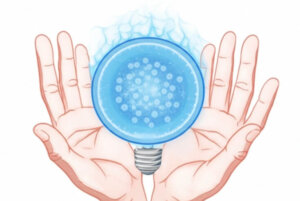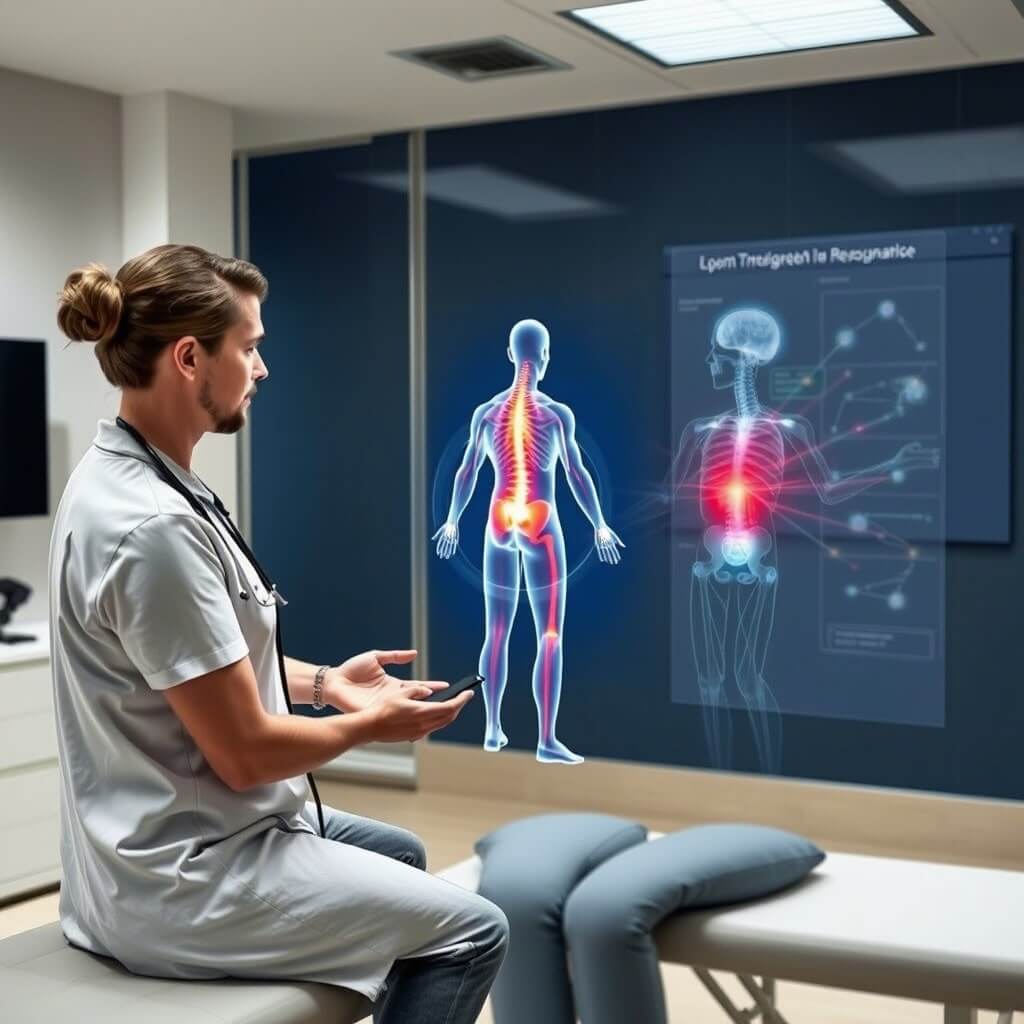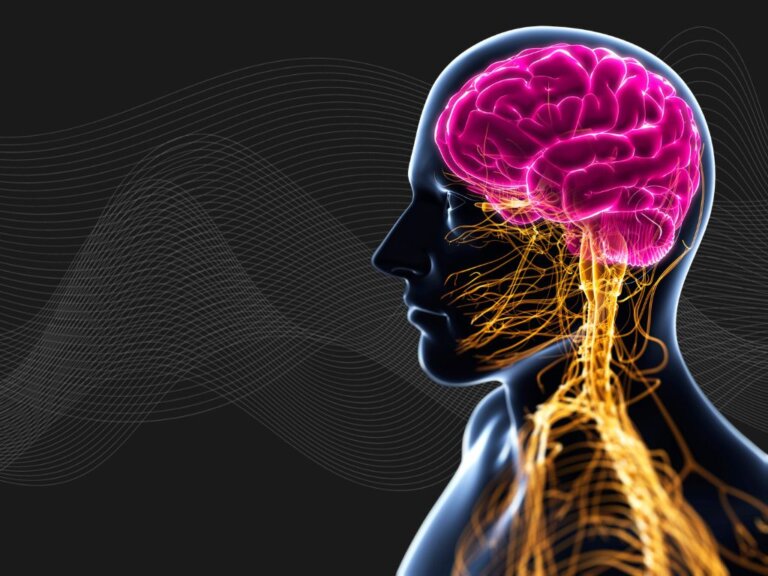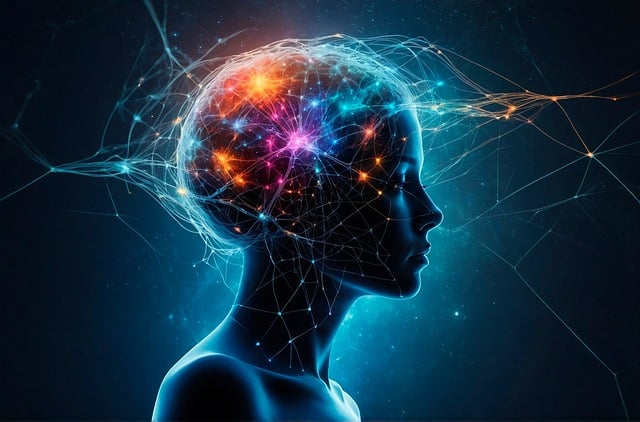We believe in professional growth of Physiotherapists with high technology!
Quantum Resonance & Physiotherapy: A Deep Dive into Emerging Concepts & Practical Implications
Introduction: Beyond Newtonian Physics in Rehabilitation
For decades, physiotherapy has operated largely within the framework of classical Newtonian physics – understanding the body as a biomechanical machine governed by forces, levers, and predictable movement patterns. While incredibly effective, this model is increasingly recognized as incomplete. The human body is not simply a collection of parts; it’s a complex, dynamic system operating at multiple levels, including the quantum realm [1]. This is where the concept of quantum resonance enters the conversation, offering a potentially revolutionary lens through which to understand pain, healing, and the effectiveness of physiotherapy interventions. This article will explore the principles of quantum resonance, its theoretical relevance to physiotherapy, potential applications, and the crucial need for further research.
Understanding Quantum Resonance: Beyond Vibration
A Brief Primer on Quantum Physics – Beyond Classical Mechanics
Classical physics describes the world as deterministic and predictable. Quantum physics, however, reveals a reality that is probabilistic and interconnected. Key concepts relevant to understanding quantum resonance include:
- Quantum Entanglement: Two particles can become linked in such a way that they share the same fate, no matter how far apart they are. Changes to one instantly affect the other. [3, 4]
- Quantum Coherence: A state where quantum particles behave as a single, unified entity, exhibiting wave-like properties [5] . This coherence is crucial for efficient energy transfer and information processing in some biological systems [6].
- Wave-Particle Duality: The concept that particles (like electrons) can exhibit both wave-like and particle-like behavior [7]. This duality is fundamental to understanding how energy interacts with matter [8].
- Quantum Fields: Rather than viewing particles as discrete entities, quantum field theory proposes that they are excitations of underlying quantum fields that permeate all of space [9]. These fields are constantly fluctuating and interacting [10].
- The Observer Effect: The act of observing a quantum system inevitably alters it [11].This highlights the role of consciousness and intention in shaping reality (a controversial but important aspect in some interpretations of quantum mechanics and its broader implications) [12, 13].
These concepts challenge our traditional understanding of the body as a purely mechanical machine. They suggest that the body is a complex, dynamic system operating on quantum principles, where information and energy are constantly exchanged [14].
Crucially, this isn’t about physical transfer of matter; it’s about the transfer of information encoded in energy [2]. When a system is exposed to a resonant frequency, it can affect the probabilities of quantum events within the target system. This can manifest as changes in cellular function, protein folding, and even gene expression [15]. Think of it like tuning a radio – a slight adjustment to the frequency allows you to lock onto a specific signal. In the body, this “signal” can be a healing response, a reduction in pain, or improved tissue regeneration.
What is Resonance? From Physics to Biology

Resonance, in physics, occurs when a system is driven at its natural frequency, leading to a large amplitude oscillation [16]. Think of pushing a child on a swing – if you push at the right time (the swing’s natural frequency), the swing goes higher and higher.
In biology, resonance manifests in various ways:
- Cellular Resonance: Cells have inherent vibrational frequencies. Healthy cells resonate at optimal frequencies, while diseased cells may exhibit altered frequencies [17, 18].
- Organ Resonance: Each organ also has a characteristic vibrational frequency, a concept explored in various biophysical and alternative medicine theories [19].
- Biofield Resonance: The concept of a “biofield” – a subtle energy field surrounding the body – suggests that this field also has resonant properties [20].This is where the connection to quantum physics becomes more apparent, as the biofield is often theorized to be a manifestation of quantum coherence within the body [21].
Quantum resonance, therefore, proposes that healing occurs when we restore optimal resonant frequencies within the body, allowing for improved communication and energy flow at the quantum level.
Differentiating Quantum Resonance from Classical Resonance & Biofeedback
It’s important to distinguish quantum resonance from familiar concepts like classical resonance and biofeedback. Classical resonance involves macroscopic vibrations and measurable physical movement. Biofeedback, while sophisticated, relies on conscious awareness and control of physiological processes, often through external devices [22]. Quantum resonance, however, operates at a subatomic level, potentially before conscious awareness, and doesn’t necessarily rely on detectable physical vibrations in the traditional sense. It’s about influencing the probability of events at a fundamental level, impacting biological processes in a subtle but significant way.
The Relevance of Quantum Resonance to Physiotherapy
Pain as a Quantum Phenomenon?
Traditional pain models focus on nociception – the detection of harmful stimuli and transmission of signals to the brain. However, chronic pain often persists after tissue healing, suggesting a more complex mechanism [23]. Quantum resonance offers a potentially elegant explanation.
Consider the concept of “quantum coherence.” Coherence refers to the synchronized behavior of quantum systems [5]. In the context of pain, it’s theorized that damaged tissues may exhibit incoherence – a loss of coordinated quantum activity. This incoherence can disrupt normal cellular communication and contribute to persistent pain signaling.
Therapeutic interventions, especially those involving subtle energy techniques (discussed later), could potentially restore coherence by introducing resonant frequencies that “entrain” the damaged tissues back into a more ordered quantum state. This doesn’t mean pain is “all in your head”; it suggests that the way the body processes and responds to pain signals can be influenced at a quantum level.
Tissue Healing & Regeneration
The body’s remarkable ability to heal relies on complex biochemical processes, including cell proliferation, differentiation, and matrix remodeling. These processes, at their core, are governed by quantum interactions [1].
Quantum resonance could influence healing by:
- Optimizing Protein Folding: Proteins are the workhorses of the body, and their proper folding is crucial for function. Quantum phenomena are known to play a role in the dynamics of protein folding [24, 25].
- Enhancing Cellular Communication: Cells communicate through electromagnetic signals [26, 27]. Resonant frequencies could amplify these signals, improving communication and coordinating the healing process.
- Promoting Stem Cell Differentiation: Stem cells have the potential to become any type of cell in the body. While direct evidence for “quantum resonance guiding stem cell differentiation” is speculative, research explores how physical cues, including electromagnetic fields, can influence stem cell fate [28, 29].
- Influencing Gene Expression: Epigenetics, the study of changes in gene expression without altering the underlying DNA sequence, is increasingly recognized as crucial in healing [30]. Some research suggests that electromagnetic fields, which are related to quantum phenomena, can influence epigenetic factors [31, 32].
The Role of Intention & The Therapist-Patient Relationship

Quantum physics acknowledges the role of the observer in shaping reality [11, 12, 13]. The act of observation (or intention) can collapse quantum probabilities into definite states. This has profound implications for physiotherapy.
The therapist’s intention, focused on facilitating healing, could potentially influence the quantum state of the patient’s tissues, a concept explored in studies of intention in healing [33, 34]. Furthermore, the therapist-patient relationship, built on trust and empathy, could create a coherent quantum field [5], amplifying the therapeutic effect [47]. This is not to diminish the importance of manual therapy techniques or exercise prescription; rather, it’s to suggest that the way those techniques are delivered – with focused intention and a strong therapeutic alliance – can significantly impact outcomes.
Current Physiotherapy Practice: Where Biophysics Matters
Physiotherapy already incorporates principles of physics and biophysics extensively, but these are generally understood through well-established classical and biomedical frameworks, not speculative quantum resonance theories.
Bioelectricity and Nerve/Muscle Function
Physiotherapists routinely use modalities based on electrical principles.
- Transcutaneous Electrical Nerve Stimulation (TENS): Uses electrical currents to modulate pain signals, primarily explained by the Gate Control Theory of pain and endorphin release mechanisms [35, 36].
- Neuromuscular Electrical Stimulation (NMES) / Functional Electrical Stimulation (FES): Uses electrical currents to depolarize motor nerves and elicit muscle contractions, aiding in muscle strengthening, re-education, and function.
These rely on classical electrophysiology – the movement of ions across cell membranes creating action potentials – not quantum resonance.
Biomechanics and Mechanotransduction
This is perhaps the most fundamental physical interaction in physiotherapy.
- Manual Therapy: Techniques like joint mobilization, manipulation, and soft tissue massage apply mechanical forces to tissues.
- Therapeutic Exercise: Prescribes specific movements and loads to stimulate adaptation.
The body’s response is largely understood through mechanotransduction: the processes by which cells sense physical forces (stretch, compression, shear stress) and convert them into biochemical signals [37]. This leads to changes in cell behaviour, tissue remodeling (e.g., bone density increase, tendon strengthening), and modulation of inflammation and pain [38]. While quantum events underpin all chemistry, the relevant level of explanation here is cellular and tissue mechanics.
Therapeutic Modalities Employing Physical Energy
Several physiotherapy modalities use specific forms of physical energy:
- Therapeutic Ultrasound: Uses high-frequency sound waves [39]. Its effects are primarily attributed to thermal mechanisms (deep heating) and non-thermal mechanisms (cavitation, acoustic streaming) influencing cell membrane permeability, protein synthesis, and inflammatory processes [40].
- Low-Level Laser Therapy (LLLT) / Photobiomodulation: Uses specific wavelengths of light [41]. Its proposed mechanisms involve photochemical and photobiological effects, primarily through absorption by mitochondrial chromophores (like cytochrome c oxidase), leading to increased ATP production, modulation of reactive oxygen species (ROS), and activation of signaling pathways affecting inflammation, pain, and tissue repair [42]. While light involves photons (quantum particles), the therapeutic explanation focuses on specific molecular interactions rather than a broad “resonance” concept.
- Pulsed Electromagnetic Fields (PEMF): Uses time-varying magnetic fields [43]. Proposed mechanisms involve inducing weak electrical currents in tissues, potentially affecting ion transport across cell membranes, growth factor signaling, and processes like bone healing or osteoarthritis management [44].
Crucially, the established understanding of these modalities relies on measurable physical energy transfer and identifiable biological responses, supported (to varying degrees) by scientific research, even if some mechanisms are still being fully elucidated. They are not typically explained using the “quantum resonance” framework common in alternative therapies.
Potential Applications in Specific Physiotherapy Techniques
Several physiotherapy techniques, when viewed through the lens of quantum resonance, can be understood as methods for restoring optimal resonant frequencies:
- Manual Therapy (Joint Mobilization, Soft Tissue Release): These techniques can be seen as restoring proper biomechanical alignment, which in turn can influence the vibrational frequencies of tissues and organs [37]. The skilled palpation of a therapist can be interpreted as sensing subtle energetic imbalances.
- Acupuncture & Dry Needling: These techniques stimulate specific points on the body, potentially influencing the flow of energy along meridians (energy pathways) and restoring resonant frequencies [45, 46].
- Movement Therapy (Pilates, Yoga, Tai Chi): These practices emphasize mindful movement and breathwork, which can promote quantum coherence [5, 6] and enhance the body’s natural healing abilities. Specific postures and movements may resonate with particular organs or systems, promoting their optimal function [19, 47].
- Biofeedback: Provides real-time feedback on physiological processes (muscle tension, heart rate variability) [22], allowing patients to consciously regulate these processes and potentially restore resonant frequencies.
- Therapeutic Exercise: Prescribed exercises can be designed not just to strengthen muscles, but also to promote specific vibrational patterns that support healing [17, 18, 19, 38].
- Light Therapy (Low-Level Laser Therapy – LLLT): Photons of light can be absorbed by cells, potentially stimulating cellular metabolism and restoring optimal resonant frequencies [41, 42].
The Future of Physiotherapy: A Holistic and Quantum-Informed Approach

The future of physiotherapy may lie in integrating the best of conventional biomechanics with a more holistic, quantum-informed approach. This could involve:
- Developing new assessment tools: Tools that can assess the body’s energetic state and identify resonant imbalances.
- Designing personalized treatment plans: Treatment plans that are tailored to the individual patient’s unique energetic signature.
- Conducting rigorous research: Research that investigates the effects of physiotherapy techniques on quantum phenomena.
- Embracing a more patient-centered approach: An approach that recognizes the patient as an active participant in their own healing process.
Conclusion:
Quantum resonance represents a paradigm shift in how we understand the body and the healing process. While the concept may seem abstract, it offers a compelling framework for explaining phenomena that are not fully accounted for by classical physics. For physiotherapists, embracing this emerging field requires open-mindedness, a willingness to explore new possibilities, and a commitment to rigorous research. By integrating quantum resonance principles into our understanding of rehabilitation, we can potentially unlock new avenues for promoting healing, reducing pain, and improving the quality of life for our patients. It’s a journey of exploration, demanding critical thinking and a willingness to move beyond the limitations of traditional paradigms.
References and Citations:
- McFadden, J., & Al-Khalili, J. (2014). Life on the Edge: The Coming of Age of Quantum Biology. Bantam Press. (General concept of quantum processes in biology)
- Lloyd, S. (2006). Programming the Universe: A Quantum Computer Scientist Takes On the Cosmos. Knopf. (Discusses information processing at a quantum level in complex systems)
- Einstein, A., Podolsky, B., & Rosen, N. (1935). Can Quantum-Mechanical Description of Physical Reality Be Considered Complete?. Physical Review, 47(10), 777–780. (The original paper proposing the EPR paradox, related to entanglement) Available from: https://journals.aps.org/pr/abstract/10.1103/PhysRev.47.777
- Horodecki, R., Horodecki, P., Horodecki, M., & Horodecki, K. (2009). Quantum entanglement. Reviews of Modern Physics, 81(2), 865–942. (A comprehensive review of quantum entanglement) Available from: https://journals.aps.org/rmp/abstract/10.1103/RevModPhys.81.865
- Schlosshauer, M. (2005). Decoherence, the measurement problem, and interpretations of quantum mechanics. Reviews of Modern Physics, 76(4), 1267–1305. (Discusses coherence and decoherence) Available from: https://journals.aps.org/rmp/abstract/10.1103/RevModPhys.76.1267
- Engel, G. S., Calhoun, T. R., Read, E. L., Ahn, T. K., Mančal, T., Cheng, Y. C., … & Fleming, G. R. (2007). Evidence for wavelike energy transfer through quantum coherence in photosynthetic systems. Nature, 446(7137), 782–786. (Example of quantum coherence in a biological system) Available from: https://www.nature.com/articles/nature05678
- Bohr, N. (1928). The Quantum Postulate and the Recent Development of Atomic Theory. Nature, 121(3050), 580–590. (Early concepts of wave-particle duality by Bohr) Available from: https://www.nature.com/articles/121580a0
- Arndt, M., Nairz, O., Vos-Andreae, J., Keller, C., Van der Zouw, G., & Zeilinger, A. (1999). Wave–particle duality of C60 molecules. Nature, 401(6754), 680–682. (Experimental demonstration of wave-particle duality for large molecules) Available from: https://www.nature.com/articles/44348
- Peskin, M. E., & Schroeder, D. V. (1995). An Introduction to Quantum Field Theory. Addison-Wesley. (A standard textbook on QFT)
- Wilczek, F. (2008). The Lightness of Being: Mass, Ether, and the Unification of Forces. Basic Books. (A more accessible explanation of quantum fields)
- Heisenberg, W. (1927). Über den anschaulichen Inhalt der quantentheoretischen Kinematik und Mechanik. Zeitschrift für Physik, 43(3-4), 172–198. (Heisenberg’s uncertainty principle paper, which discusses the limits of observation) English translation available.
- Wigner, E. P. (1961). Remarks on the mind-body question. In I. J. Good (Ed.), The Scientist Speculates(pp. 284–302). Heinemann. (Classic paper discussing consciousness in quantum measurement)
- Stapp, H. P. (2007). Mindful Universe: Quantum Mechanics and the Participating Observer. Springer. (Explores the role of the observer and consciousness in quantum mechanics)
- Bischof, M., & Del Giudice, E. (2013). Communication and the Emergence of Collective Behavior in Living Organisms: A Quantum Approach. Molecular Biology International, 2013, 987549. (Discusses quantum approaches to cellular communication and behavior) Available from: https://www.hindawi.com/journals/mbi/2013/987549/
- Montagnier, L., Aissa, J., Ferris, S., Montagnier, J. L., & Lavallee, C. (2009). Electromagnetic signals are produced by aqueous nanostructures derived from bacterial DNA sequences. Interdisciplinary Sciences: Computational Life Sciences, 1(2), 81–90. (Controversial research suggesting DNA can emit electromagnetic signals, sometimes linked to quantum information transfer) Available from: https://link.springer.com/article/10.1007/s12539-009-0036-7
- French, A. P. (1971). Vibrations and Waves. W. W. Norton & Company. (Classic physics textbook on resonance)
- Pelling, A. E., Sehati, S., Gralla, E. B., Valentine, J. S., & Gimzewski, J. K. (2004). Local nanomechanical motion of the cell wall of Saccharomyces cerevisiae. Science, 305(5687), 1147–1150. (Shows mechanical vibrations of cells) Available from: https://www.science.org/doi/10.1126/science.1097640
- Tsonis, A. A. (2009). The subject of cellular/molecular vibrations and resonance: A new direction for understanding aging and related diseases?. EMBO Reports, 10(4), 309. (Discusses cellular vibrations in health and disease) Available from: https://www.embopress.org/doi/full/10.1038/embor.2009.39
- Oschman, J. L. (2000). Energy Medicine: The Scientific Basis. Churchill Livingstone. (Discusses concepts like organ resonance from an energy medicine perspective)
- Rubik, B. (2002). The biofield hypothesis: Its biophysical basis and role in medicine. Journal of Alternative and Complementary Medicine, 8(6), 703–717. (A review of the biofield hypothesis) Available from: https://www.liebertpub.com/doi/abs/10.1089/10755530260511711
- Rein, G. (2004). Bioinformation within the biofield: Beyond bioelectromagnetics. Journal of Alternative and Complementary Medicine, 10(1), 59–68. (Connects biofield concepts with quantum information) Available from: https://www.liebertpub.com/doi/abs/10.1089/107555304322849046
- Frank, D. L., Khorshid, L., Kiffer, J. F., Moravec, C. S., & McKee, M. G. (2010). Biofeedback in medicine: who, when, why and how?. Mental Health in Family Medicine, 7(2), 85–91. (Overview of biofeedback) Available from: https://www.ncbi.nlm.nih.gov/pmc/articles/PMC2939454/
- Woolf, C. J. (2011). Central sensitization: implications for the diagnosis and treatment of pain. Pain, 152(3 Suppl), S2–S15. (Discusses mechanisms of chronic pain beyond acute nociception) Available from: https://www.ncbi.nlm.nih.gov/pmc/articles/PMC3268359/
- Fraunfelder, H., Sligar, S. G., & Wolynes, P. G. (1991). The energy landscapes and motions of proteins. Science, 254(5038), 1598–1603. (Discusses energy landscapes relevant to protein folding) Available from: https://www.science.org/doi/10.1126/science.1749933
- Brookes, J. C. (2017). Quantum effects in biology: a review of the experimental evidence. Proceedings of the Royal Society A: Mathematical, Physical and Engineering Sciences, 473(2201), 20160822. (Reviews quantum effects in biological processes, including enzyme action which relates to protein function) Available from: https://royalsocietypublishing.org/doi/10.1098/rspa.2016.0822
- Funk, R. H., Monsees, T., & Özkucur, N. (2009). Electromagnetic effects–From cell biology to medicine. Progress in Histochemistry and Cytochemistry, 43(4), 177–264. (Review of electromagnetic effects on cells) Available from: https://www.sciencedirect.com/science/article/abs/pii/S007963360800012X
- Cifra, M., Fields, J. Z., & Farhadi, A. (2011). Electromagnetic cellular interactions. Progress in Biophysics and Molecular Biology, 105(3), 223–246. (Discusses cellular communication via electromagnetic fields) Available from: https://www.sciencedirect.com/science/article/abs/pii/S007961071000160X
- Trosko, J. E. (2007). The role of stem cells and gap junctional intercellular communication in human carcinogenesis and radiation-induced bystander effects. Health Physics, 93(2), 140–144. (While not “quantum resonance,” discusses physical influences on stem cells) Available from: https://journals.lww.com/health-physics/abstract/2007/08000/the_role_of_stem_cells_and_gap_junctional.10.aspx
- Ross, C. L., & Gaharwar, A. K. (2020). Bioinks for 3D Bioprinting of Electrically Conductive Tissues. Acta Biomaterialia, 109, 1-20. (Discusses how electrical cues, related to electromagnetism, influence tissue regeneration and stem cells) Available from: https://www.sciencedirect.com/science/article/abs/pii/S174270612030281X
- Berger, S. L. (2007). The complex language of chromatin regulation during transcription. Nature, 447(7143), 407–412. (Overview of epigenetics) Available from: https://www.nature.com/articles/nature05915
- Costantini, E., KamalఒMohamed, R., & LVerginelli F. (2019). The Role of Extremely Low-Frequency Electromagnetic Fields in Inflammation and Repair: A Review.International Journal of Molecular Sciences, 20(23), 6058. (Discusses how EMFs, which involve quantum particles (photons), can modulate inflammatory processes, potentially involving epigenetic mechanisms) Available from: https://www.mdpi.com/1422-0067/20/23/6058
- Hossain, M. A., Kulin, S. J., & Faruque, M. R. I. (2021). Effect of electromagnetic field on gene expression and epigenetic modification. Electromagnetic Biology and Medicine, 40(1), 104-116. (Reviews effects of EMFs on gene expression and epigenetics) Available from: https://www.tandfonline.com/doi/abs/10.1080/15368378.2020.1856204
- Radin, D., Schlitz, M., & Baur, C. (2006). Distant healing intention: A meta-analysis of randomized trials. EXPLORE: The Journal of Science and Healing, 2(4), 306-309. (While controversial, this meta-analysis looks at intention in healing) Note: The original article cited a presentation; this is a frequently cited paper on the topic. The link would be to the journal.
- Dossey, L. (1997). The power of nonlocal prayer: an overview. Subtle Energies & Energy Medicine Journal Archives, 8(1). (Discusses concepts of nonlocal healing and intention) Available from: https://journals.sfu.ca/seemj/index.php/seemj/article/view/371
- Melzack, R., & Wall, P. D. (1965). Pain mechanisms: a new theory. Science, 150(3699), 971–979. (The original Gate Control Theory paper) Available from: https://www.science.org/doi/10.1126/science.150.3699.971
- Sluka, K. A., & Walsh, D. (2003). Transcutaneous electrical nerve stimulation: basic science mechanisms and clinical effectiveness. The Journal of Pain, 4(3), 109–121. (Review of TENS mechanisms) Available from: https://www.jpain.org/article/S1526-5900(03)00016-7/fulltext
- Ingber, D. E. (2003). Mechanobiology and diseases of mechanotransduction. Annals of Medicine, 35(8), 564–577. (Overview of mechanotransduction) Available from: https://www.tandfonline.com/doi/abs/10.1080/07853890310016304
- Khan, K. M., & Scott, A. (2009). Mechanotherapy: how physical therapists’ prescription of exercise promotes tissue repair. British Journal of Sports Medicine, 43(4), 247–252. (Mechanotransduction in the context of therapeutic exercise) Available from: https://bjsm.bmj.com/content/43/4/247.short
- Baker, K. G., Robertson, V. J., & Duck, F. A. (2001). A review of therapeutic ultrasound: biophysical effects. Physical Therapy, 81(7), 1351–1358. (Review of ultrasound biophysical effects) Available from: https://academic.oup.com/ptj/article/81/7/1351/2857589
- Miller, D. L., Smith, N. B., Bailey, M. R., Czarnota, G. J., Hynynen, K., & Makin, I. R. S. (2012). Overview of therapeutic ultrasound applications and safety considerations. Journal of Ultrasound in Medicine, 31(4), 623–634. (Overview of therapeutic ultrasound) Available from: https://onlinelibrary.wiley.com/doi/full/10.7863/jum.2012.31.4.623
- Chung, H., Dai, T., Sharma, S. K., Huang, Y. Y., Carroll, J. D., & Hamblin, M. R. (2012). The nuts and bolts of low-level laser (light) therapy. Annals of Biomedical Engineering, 40(2), 516–533. (Detailed review of LLLT mechanisms) Available from: https://www.ncbi.nlm.nih.gov/pmc/articles/PMC3288797/
- de Freitas, L. F., & Hamblin, M. R. (2016). Proposed Mechanisms of Photobiomodulation or Low-Level Light Therapy. IEEE Journal of Selected Topics in Quantum Electronics, 22(3), 348-364. (Mechanisms of photobiomodulation) Available from: https://ieeexplore.ieee.org/document/7370904
- Markov, M. S. (2007). Pulsed electromagnetic field therapy history, state of the art and future. The Environmentalist, 27(4), 465-475. (Overview of PEMF therapy) Available from: https://link.springer.com/article/10.1007/s10669-007-9130-2
- Bassett, C. A. (1993). Beneficial effects of electromagnetic fields. Journal of Cellular Biochemistry, 51(4), 387-393. (Discusses effects of PEMFs) Available from: https://onlinelibrary.wiley.com/doi/abs/10.1002/jcb.2400510402
- Zhang, W. B., Wang, L., & Li, H. Y. (2014). Quantum-mechanical aspect of acupuncture meridians. Journal of Acupuncture and Meridian Studies, 7(4), 171–176. (A perspective linking acupuncture meridians to quantum mechanics, which is a theoretical interpretation) Available from: https://www.sciencedirect.com/science/article/abs/pii/S200529011400039X
- Langevin, H. M., & Yandow, J. A. (2002). Relationship of acupuncture points and meridians to connective tissue planes. The Anatomical Record: Advances in Integrative Anatomy and Evolutionary Biology, 269(6), 257–265. (Discusses anatomical correlates of meridians, not directly quantum, but often cited in discussions of acupuncture mechanisms) Available from: https://anatomypubs.onlinelibrary.wiley.com/doi/abs/10.1002/ar.10185
- Laskow, L. (1999). Healing with Love: A Breakthrough Mind/Body Medical Program for Healing Yourself and Others. HarperCollins. (While not a peer-reviewed journal, this book by a physician explores concepts of focused intention, coherence and healing, which align with some themes in the article regarding movement therapies and mind-body connection.)







